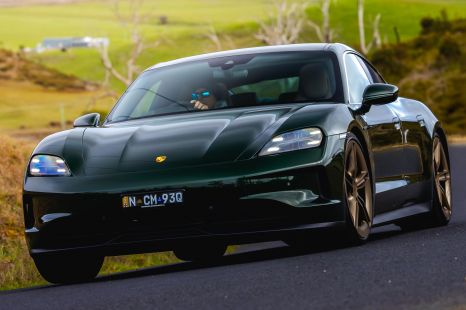

James Wong
2025 Porsche Taycan review
1 Year Ago
Former Subaru WRC driver Chris Atkinson gets behind the wheel of the latest WRX to see if the iconic sports sedan is better than ever.
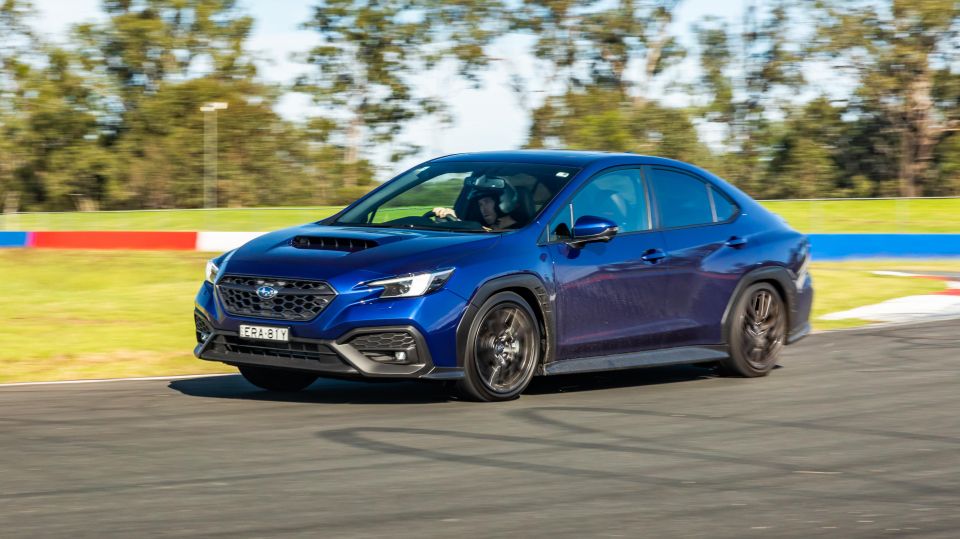


Quickly see how this car stacks up against its competition. Select any benchmark to see more details.
Where expert car reviews meet expert car buying – CarExpert gives you trusted advice, personalised service and real savings on your next new car.
If you have read my review of the previous-generation Subaru WRX STI and my opinion piece on what I wanted from the next WRX STI, you would have seen that I am a glass half full kind of guy. I saw this as a chance for Subaru to reinstate itself at the top of the pecking order for performance well beyond its price tag.
The Subaru WRX was never the king of the track, yet always offered an impressive and engaging driving experience, which is almost more important to the majority of buyers.
The benchmark time from the previous-generation WRX STI stood up reasonably well on the leaderboard and I saw that as a good target for this new-generation Subaru WRX.
But somewhat disappointingly, my optimism surrounding the changes for 2022 where a little inflated and as the direct opposition and not-so-direct front-wheel drive opposition continue to push forward, Subaru feel like they are treading water. Improving in certain areas and losing some of what made it special in others.
The Subaru WRX is still far from underwhelming on the track and the resulting time is very respectable, it’s just my own preconceived ideas of what a Subaru WRX should be leave me wanting more.

The upgrade from a 2.0-litre to a 2.4-litre turbocharged ‘Boxer’ engine, with 202kW of power and 350Nm of torque, brings only a moderate increase of 5kW, despite adding 400cc in size. This is the same base engine as in the non-turbocharged BRZ Coupe and that’s the direction my initial thoughts go as a reference point.
I was really impressed with how well the Subaru BRZ used its rev range, yet I didn’t get the same feeling from the WRX. It’s an engine that feels like it wants to rev but as soon as you get going, you run into the rev limiter at 6000rpm and I’m almost embarrassed to say how often I did this.
As a racing driver you normally really get a feeling of where an engine wants to live and for me, something was missing here. I had to consciously pre-empt each shift, because when I thought I was in the perfect part of the rev range, I’d step on the throttle and hit the limiter.
Wider gearing could help this situation, but then performance would suffer.
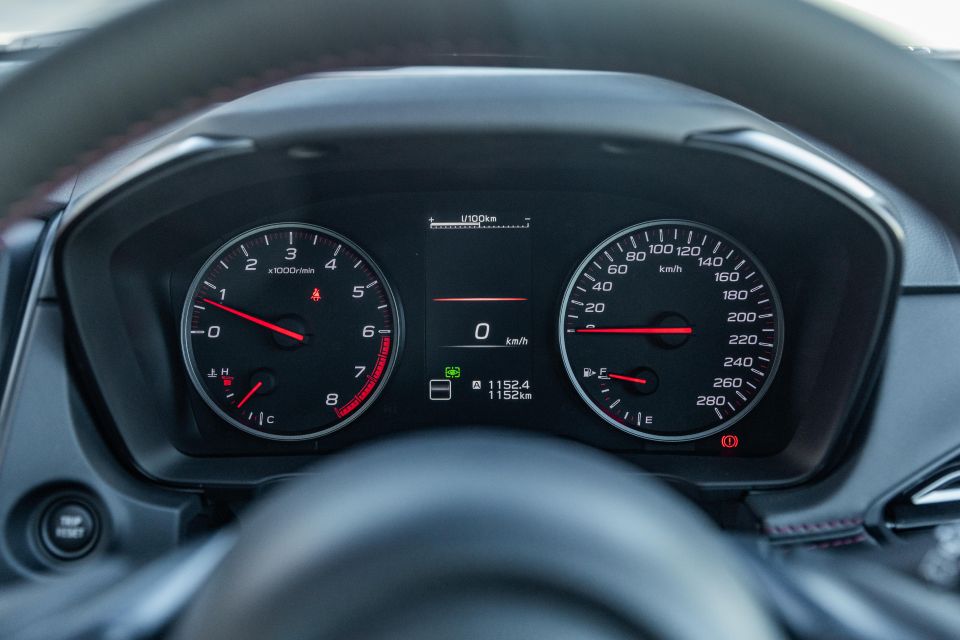
The torque curve is wide and flat but could be pushed so much further, and although it’s smooth and driveable I actually want it to be sharp and edgy. I want that surge of torque and the ability to rev it out!
You’ll know by now that I love a good torque curve, and the new WRX does offer that over the previous generation, but you almost have to forcefully under-drive it to make the most of it.
I managed a 0-100 of 6.35 seconds with only a couple of attempts, and with much greater ease than you would normally expect from a WRX thanks to the bigger engine and wider torque curve. Unfortunately, most of the AWD cars on our leaderboard are in the 4-5 second brackets – usually with the help of a well-designed launch control system.
This engine has so much potential, but it needs to tap into said potential to keep up with the opposition.

The brake pedal feel and the ability to be able to modulate and control the release on the way into the corner was good, but it couldn’t match the previous-generation Subaru WRX STI for outright stopping power.
I recorded 100-0 in 2.78 sec @ 36.80m – about one metre more than the old STI.
I did struggle on the 3 and 4 lap with the pedal starting to go a little long as well. While it didn’t affect lap time too much, it wasn’t great for confidence.
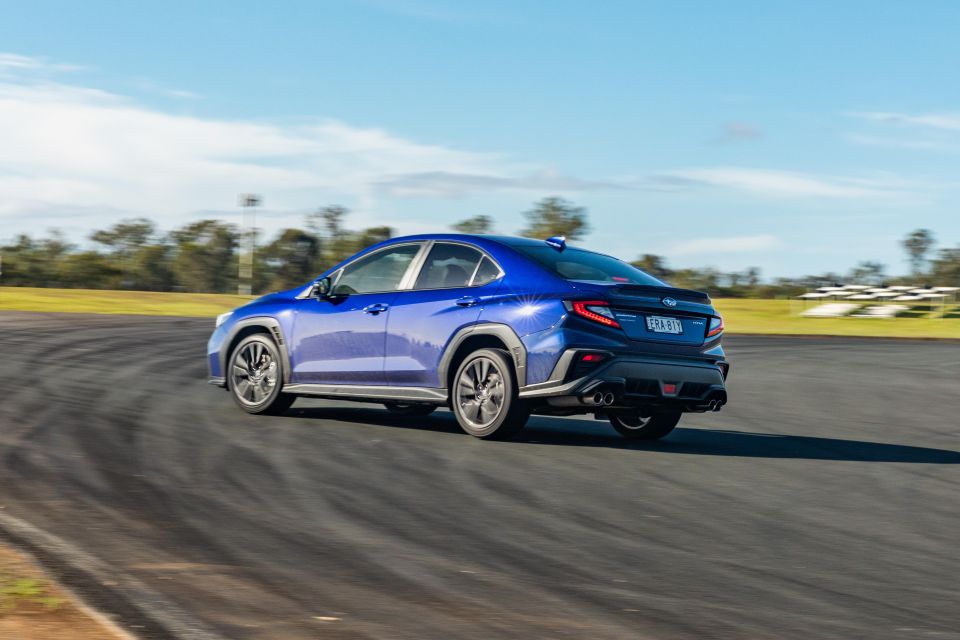
The chassis is the area where the Subaru WRX has had the biggest improvement for me. Balance has been improved and it feels more rigid as well.
Gone is the tendency to understeer on track, with the rear even letting go a couple of times on some of the slippery corners.
On track, the chassis outperformed the suspension, something that Subaru hasn’t achieved for a long time. It felt like you could start adding support and the chassis would respond in a positive manner.
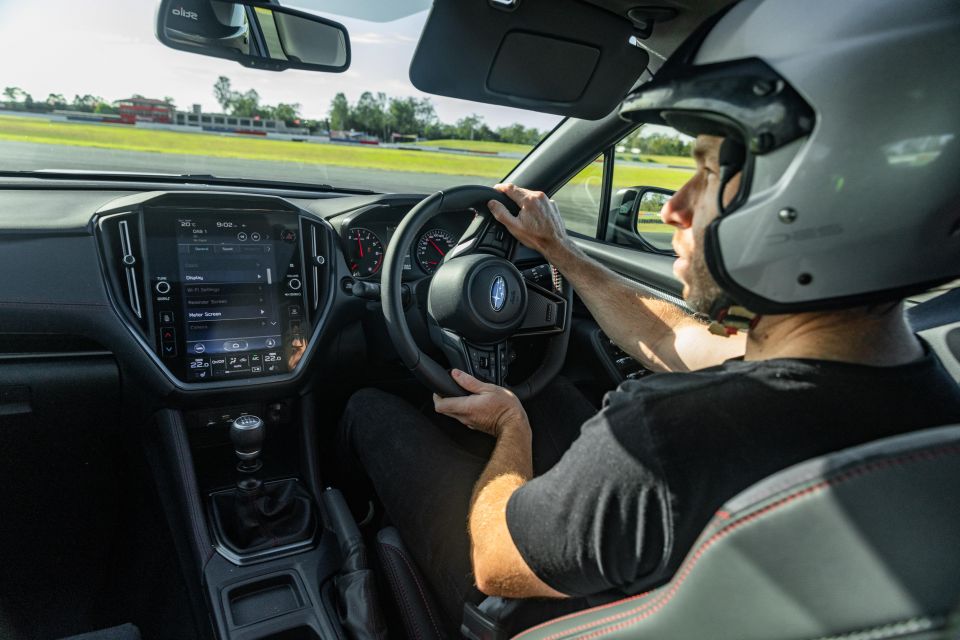
If you did this with the previous generation, it would most likely induce even more understeer, followed by a big extra helping of oversteer if you waited long enough.
You don’t need to fight as hard to get the entry right with this car or be as patient on the throttle to get the exit right. Maybe Subaru did take some note of my previous tests.
“Some slight refinement to the front geometry to help while adding steering and support across the rear, would absolutely transform this car” – which is exactly what they have done, with changes to the rear stabiliser bar to add more support when cornering and optimised front suspension geometry to help on the track.
This is definitely a chassis that Subaru can push a lot further performance-wise, than what they were working with in the past.
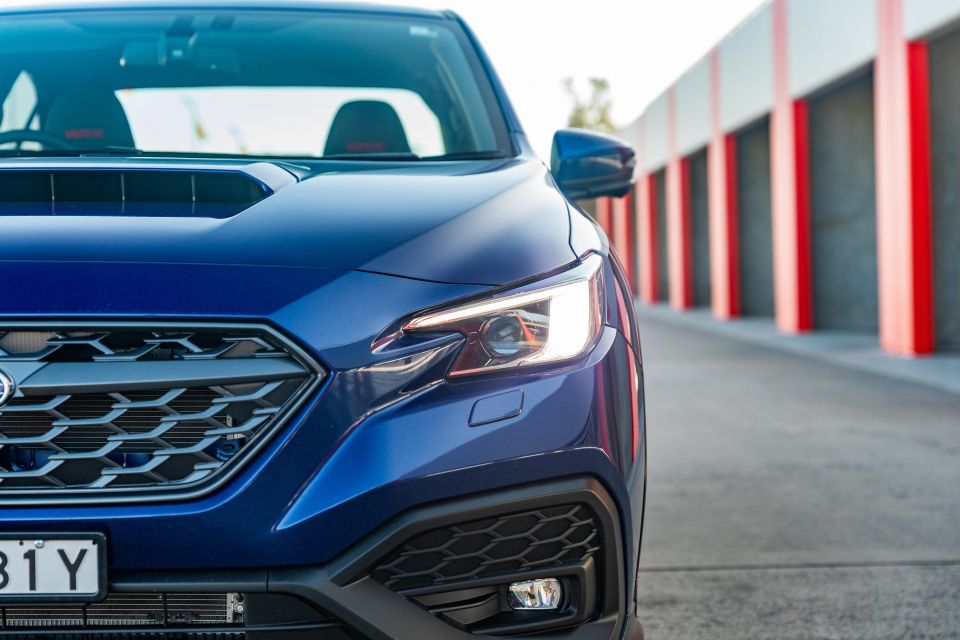
The six-speed manual transmission is good, and a slight improvement on the previous generation. I never had any issues shifting, which was not always the case on a track previously, but it didn’t quite have the same precise feeling that the latest Subaru BRZ’s gearbox has.
To be honest I’m a bit unsure about the gear ratios – is it the engine causing the issue or is it the gear ratios that aren’t right for the engine? I would love to spend a day with Subaru’s engineers working on this and understand what they are trying to achieve.
Fundamentally if the engine was allowed to rev out further, it wouldn’t be an issue and there is plenty of torque for it to fall back into. Maybe the engine just falls off a power and torque cliff past this point and they couldn’t let it rev out any more.

It just seems all a bit compromised to me, while the BRZ engine transmission seemed in perfect harmony.
The all-wheel drive system has a 50:50 torque split and a viscous-coupling centre differential, but no front or rear limited-slip differentials. This last point is the most noticeable difference, with the front and rear axles searching for grip on the exit of the slower corners.
With nothing apart from the tyre grip and your foot to control the torque and wheel speed, there are some inconsistent movements when pushing hard.
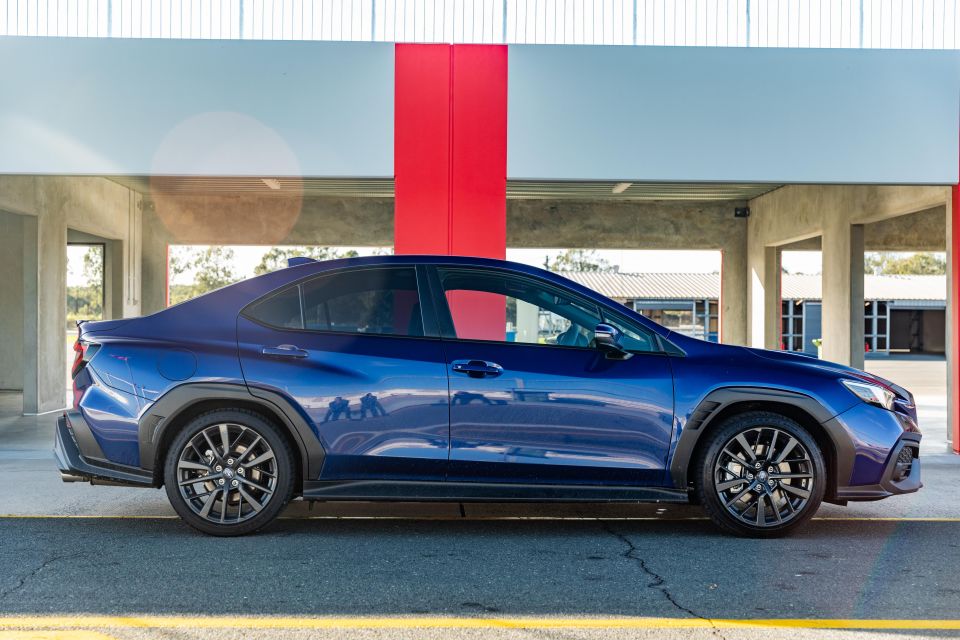
The suspension in the Subaru WRX has always been a good compromise, but this is the first time on the track that I really felt like the chassis could handle a more aggressive tune.
It has nice support on bumps as always and had no problem attacking the curbs. On the higher-speed corners however, it lacked the rebound control to tie it down and the chassis precision wasn’t rewarded with enhanced performance.
Overall it’s a more refined and easier to control package, which will be a benefit the majority of people who hop behind the wheel.

I wish I could say this was as good as before, with a new dual-pinion electric power steering system in the Subaru WRX claiming to “separate the driver’s input shaft from the motor assist shaft”, but instead seems to have separated the feeling from the driver as well.
This may sound harsh, but the first time I turned a corner, I was almost shocked at the difference.
Now most people are not going to notice a huge difference in normal driving and parking, but for what was once a highlight of the WRX, this is definitely a step backwards.
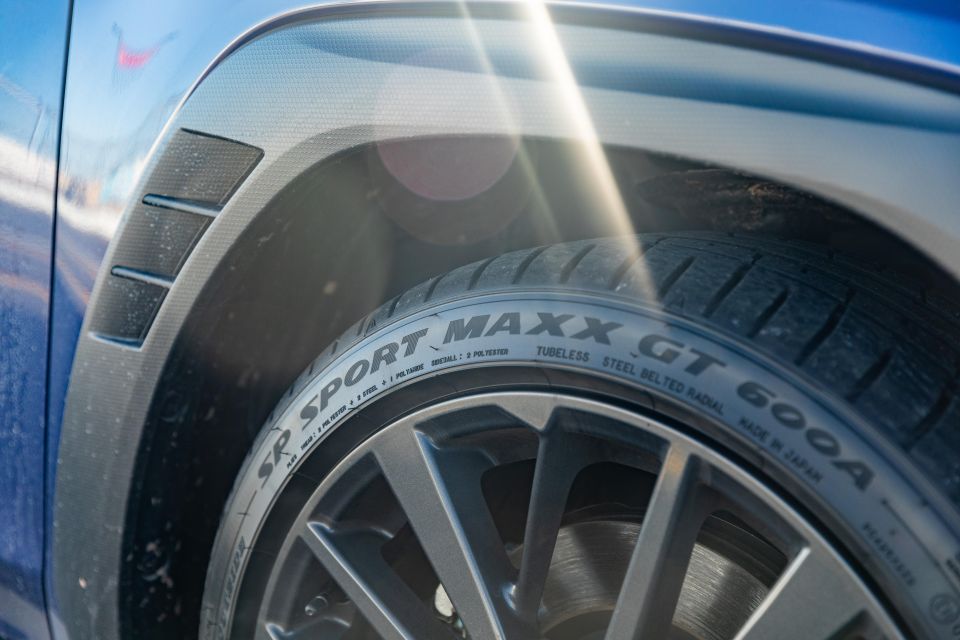
The Dunlop SP Sport Maxx GT 245/40 R18 tyres worked fine on track, and I didn’t notice a huge drop-off in grip at all.
Conditions were pretty much perfect and I felt like they missed a bit of outright performance compared to a Michelin Pilot Sport 4S.
No traction or stability control was needed on the track, with the all-wheel drive system doing the job for me.
There are no other real options in the manual WRX, just hop in and go!
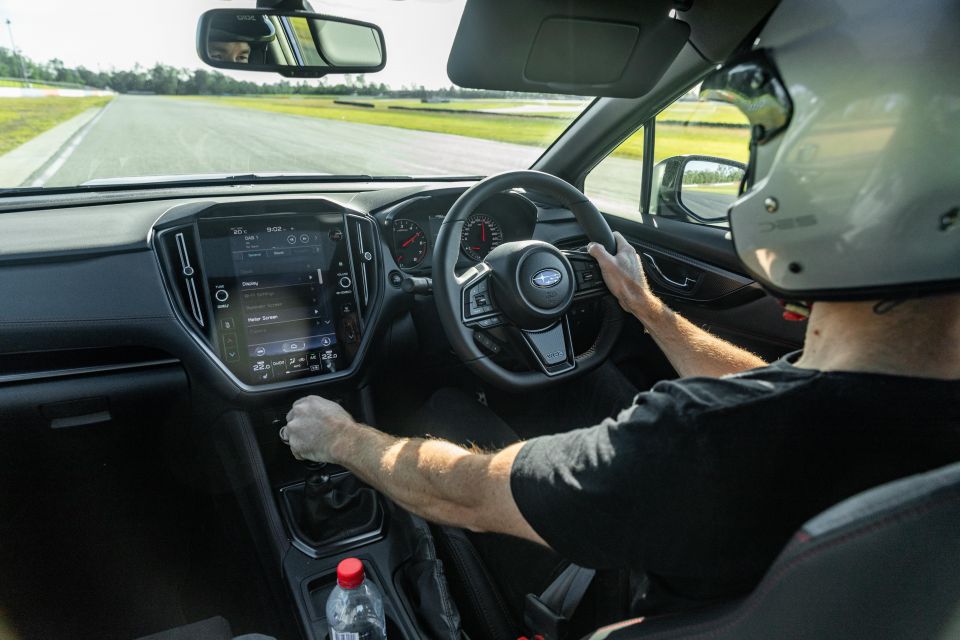
The steering wheel is a little thicker, but still nice and has good texture and grip. I had no problem heel-toeing, finding the pedal position to be very good as well.
Seat position and support were reasonable, but not the extreme that you used to get from older WRX generations.
Overall, the cabin does the job without really standing out.
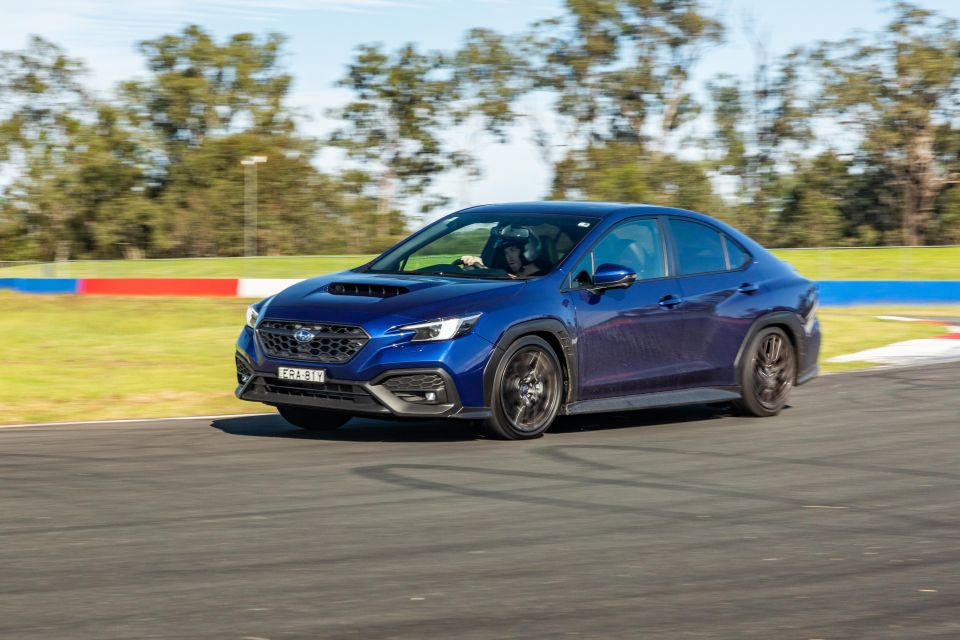
The 2022 Subaru WRX is a more complete package than the previous version, but on track disconnected is the first word that jumps to my mind after doing a lap.
It didn’t feel slow, it didn’t feel fast, it just did a good job. I personally want more than a good job from a WRX.
For such an iconic car, it has somehow transitioned into sporty conservatism, while the opposition, including two-wheel drive alternatives, have started to push the boundaries further. No longer can it rely just on its all-wheel drive traction to blast the opposition away.
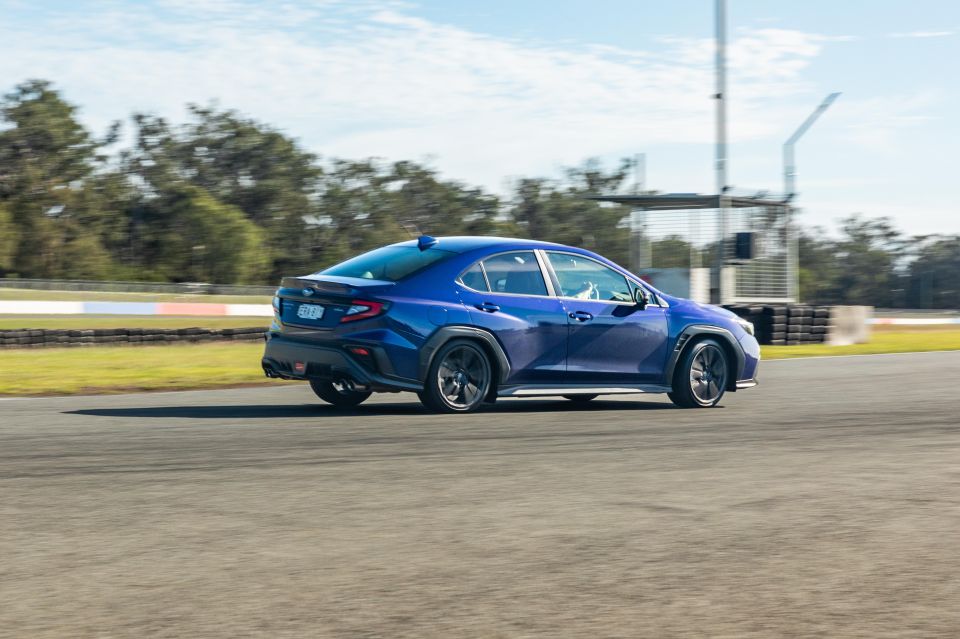
Where expert car reviews meet expert car buying – CarExpert gives you trusted advice, personalised service and real savings on your next new car.
Initially I was a bit surprised when I heard what lap time the Subaru WRX did.
On the track it was deceptive and efficient, two things that normally aren’t associated with the WRX and the final time compares well against something like the Toyota GR Yaris (non-Rallye).
Its 61.37-second lap just sneaks in front of the Yaris on the CarExpert Leaderboard. So, it still offers good-value performance in its category, but it is far from the only choice in this impressive segment these days.
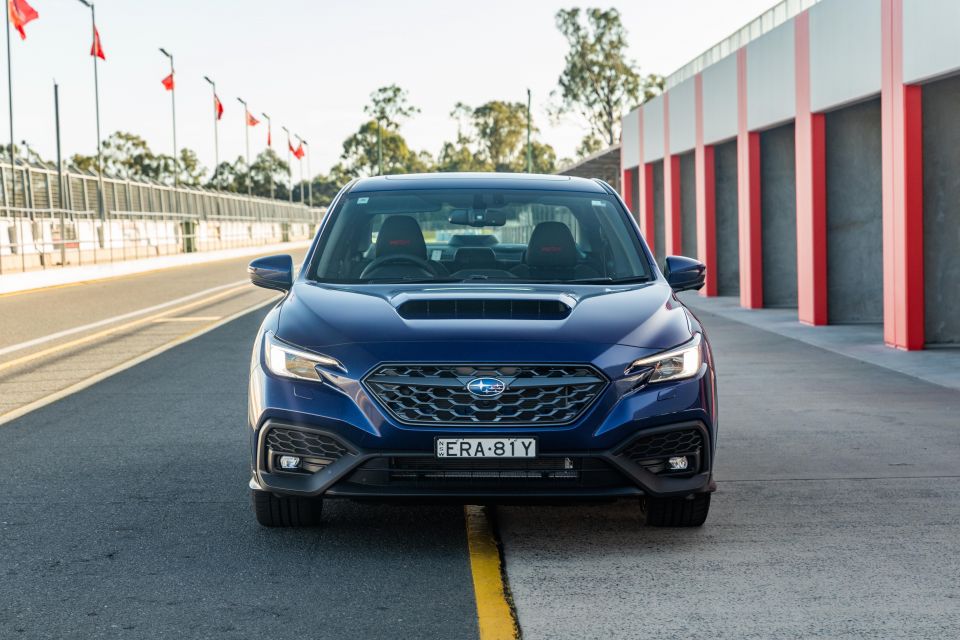
Click the images for the full gallery
MORE: Everything Subaru WRX
Where expert car reviews meet expert car buying – CarExpert gives you trusted advice, personalised service and real savings on your next new car.
Discover and compare similar models


James Wong
1 Year Ago
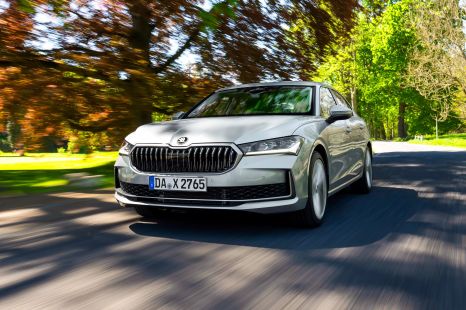

Matt Campbell
11 Months Ago
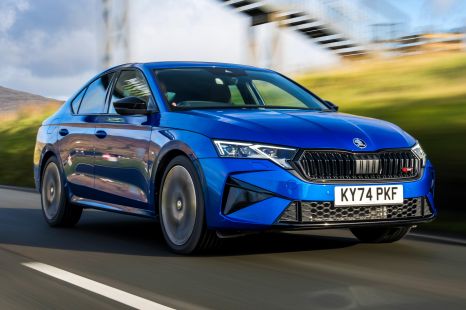

Matt Robinson
9 Months Ago


Matt Campbell
8 Months Ago
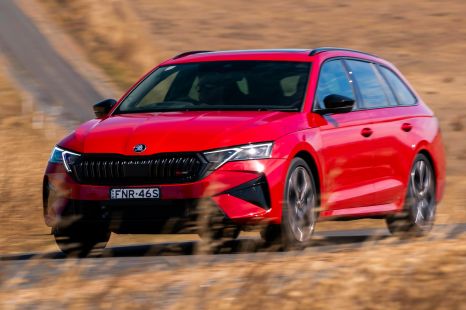

Josh Nevett
5 Months Ago
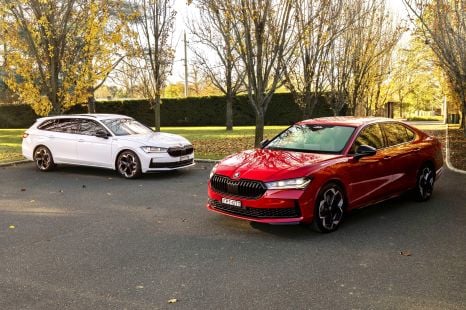

Max Davies
2 Months Ago
Suggested Comparisons